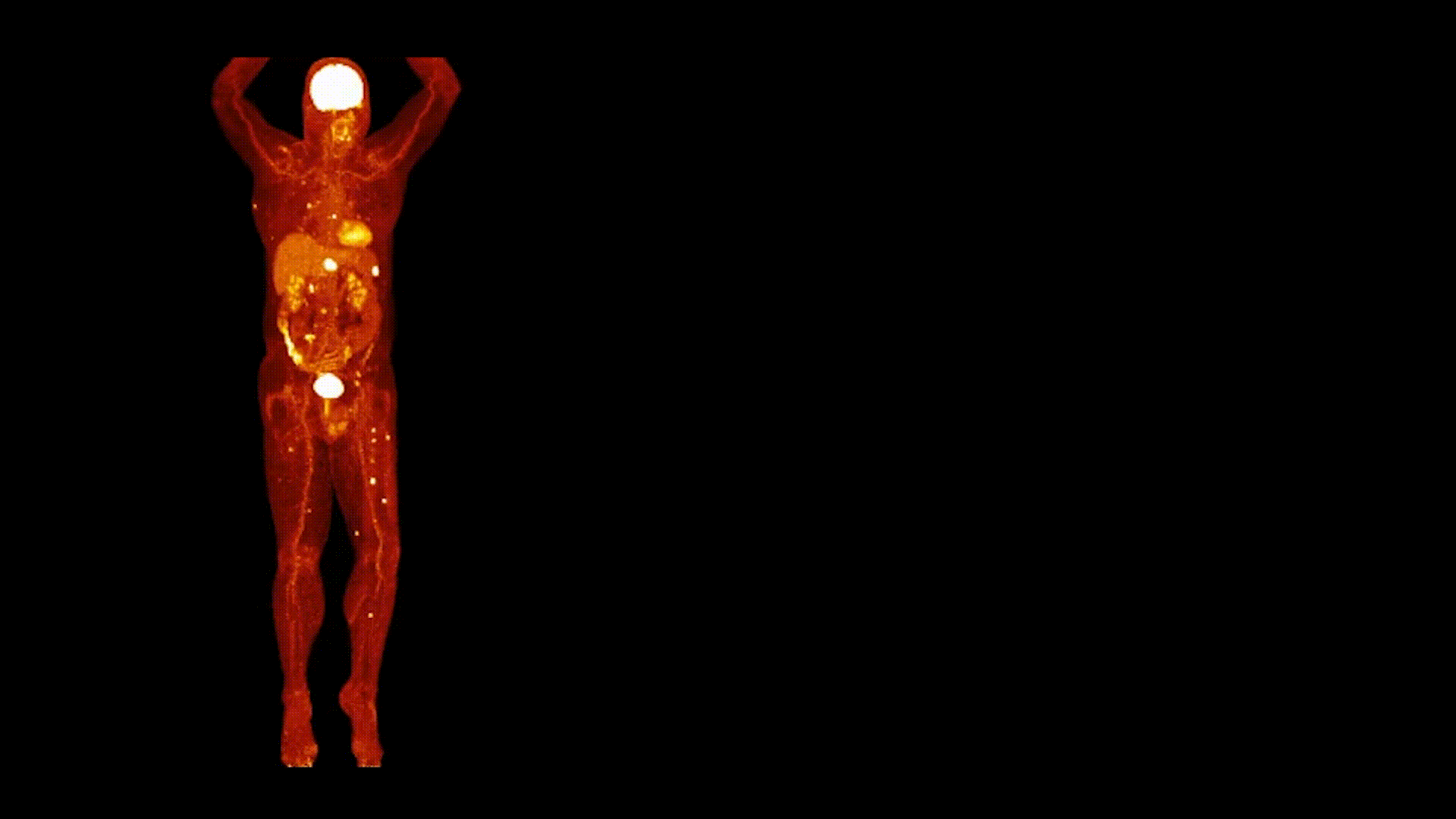Staying at the forefront of medical technology aligns with Hospital Clinic de BarcelonaŌĆÖs mission as a leading university hospital committed to innovation. Obtaining a PET/CT with 178-picoseconds time of flight helps to keep the hospital on target.
Data courtesy of Hospital Cl├Łnic de Barcelona, Spain
During the past five years, Hospital Cl├Łnic de Barcelona, a major university hospital located in the Catalonian capital in Spain, has seen a 10% increase in its use of PET/CT. ŌĆ£For us, it is a big jump. This change is, of course, related to our increased aging population, but also to the growing importance of PET/CT for oncology and for clinical trials in several fields of medicine,ŌĆØ says Dr. David Fuster, head of the hospitalŌĆÖs Cl├Łnic Nuclear Medicine Service. To cope with the increasing demand for diagnostics and therapy, Fuster and his colleagues acquired a Biograph Vision.X PET/CT scanner in October 2024.╠²
ŌĆ£We knew this newer model was going to offer us exceptional image quality, sensitivity, and fast scanning times, all of which translate into accurate diagnoses and improved patient outcomes,ŌĆØ explains biomedical engineer Dr. Aida Ni├▒erola, Hospital Cl├ŁnicŌĆÖs lead expert in PET/CT. ŌĆ£These are essential goals for quicker treatment decisions. Also, staying at the forefront of medical technology aligns with our mission as a leading university hospital committed to innovation.ŌĆØ
ŌĆ£Continuous system-performance monitoring also helps identify issues before they can have an impact on our patients.ŌĆØ
Twin goals: patient care and research
Hospital Cl├Łnic de BarcelonaŌĆÖs nuclear medicine division has been pursuing its twin goals of patient care and medical research since its inception 50 years ago within the University of Barcelona. ŌĆ£We provide the entire range of medical services, from primary care to high-complexity therapies. Hospital Cl├Łnic is among the top 25 hospitals in scientific output worldwide, thanks to its synergistic relationship with the University of Barcelona,ŌĆØ says Dr. Fuster.╠²
Not only medical students, but also those who are majoring in nursing, pharmacy, psychology, and biomedical engineering spend time here as part of their training. ŌĆ£We have medical professionals, researchers, and engineers working together all the time. This kind of interdisciplinarity boosts our ability to address complex cases through innovation and evidence-based practices,ŌĆØ adds Ni├▒erola. Their collaboration with clinical trials in many different fields also helps to bring new technologies into SpainŌĆÖs public health system, she says.╠²
Fuster explains that their latest PET/ CT device is being used mostly for oncological diagnostics, therapy, and clinical trials. ŌĆ£Another relevant field is the evaluation of neurological disorders, especially AlzheimerŌĆÖs disease and other forms of dementia. The sensitivity and precision afforded by this scanner is also helping us to evaluate the effects of myocardial conditions as well as assist in researching inflammation and infectious diseases, whose importance has been growing in the past few years.ŌĆØ
Improved patient flow
Detecting lesions precisely
Fuster says his team experienced a learning curve in terms of optimizing parameters and adapting to higher noise levels. ŌĆ£We tend to forget that more detail can also mean more noise,ŌĆØ he explains. ŌĆ£But now we are used to seeing these new images; it would not be possible to go back to the old ones. It will help to enhance our lesion detection capabilities.ŌĆØ╠²
This is where Biograph Vision.XŌĆÖs 178-picoseconds time of flight (TOF), the fastest in the industry,1 comes into its own. The scanner can detect the location of events that are reaching its detectors from different places in the patientŌĆÖs body with an astonishing level of precision. ŌĆ£That means that it can deliver high quality imaging so we can detect lesions more precisely,ŌĆØ adds Ni├▒erola.╠²
ŌĆ£The learning curve, of course, varies according to oneŌĆÖs previous experience with PET/CT systems. I think the most difficult part was to figure out time acquisition and reconstruction parameters our nuclear physicians could work with easily. We needed to adapt to these changes but also play with the parameters a little bit until we could reach a comfortable level of diagnostic and quantitative accuracy.ŌĆØ
Reducing human error
Ni├▒erola points out that the scannerŌĆÖs automated processes reduce manual intervention and tend to minimize potential human error. ŌĆ£Another helpful feature is the possibility of remote monitoring and support. This allows technicians to troubleshoot any issue quickly without the need for on-site assistance. And that means less downtime for the equipment overall.ŌĆØ
Quality control has also improved for the Hospital Cl├ŁnicŌĆÖs PET/CT scans, thanks in part to an automated calibration routine that the system performs overnight, ensuring a more consistent performance over time, according to Ni├▒erola.
ŌĆ£Continuous system-performance monitoring also helps identify issues before they can have an impact on our patients. ItŌĆÖs very different from situations in which you need to perform periodical manual checks. ThereŌĆÖs a clear difference when we compare this to other systems.ŌĆØ
ŌĆ£The sensitivity and precision afforded by this scanner is also helping us to evaluate the effects of myocardial conditions, as well as assist in researching inflammation and infectious diseases, whose importance has been growing in the past few years.ŌĆØ
Signifies commitment
By enhancing diagnostic accuracy, improving patient throughput, and reducing human error, the introduction of the Biograph Vision.X PET/CT scanner underscores the hospitalŌĆÖs commitment to superior patient care and pioneering medical research. As the Hospital Cl├Łnic continues to evolve with advancements in technology, it remains a beacon of innovation and excellence for BarcelonaŌĆÖs increasing patient population and the greater medical community.
About the author
Reinaldo Jose╠ü Lopes is a science and health writer at Folha de S. Paulo, BrazilŌĆÖs leading daily newspaper, and is the author of several books.
Related Articles & More Information








